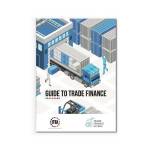What are the Types of Trade Finance? | Trade Finance Global 2025 Guide

This content was produced in conjunction with ITFA.
Access trade, receivables and supply chain finance
We assist companies to access trade and receivables finance through our relationships with 270+ banks, funds and alternative finance houses.
Get StartedContents
What are the main types of trade finance?
Trade finance’ is a catch-all term for the financing of international trade. In this article, we will briefly summarise some of the main trade finance products that are available to businesses.
Trade credit
This is often the cheapest and simplest payment type. It means sellers can fulfil their product or service obligation on the understanding that customers will pay them 30, 60, or 90 days later.
More risk-averse businesses often take out insurance to protect themselves against potential non-payment.
Cash advance
This is an (unsecured) payment of funds given to the exporting business before the goods or services are delivered.
It is popular with exporters because it allows them to start manufacturing their goods right after they receive an order. However, it can be a high-risk approach for buyers, as production could be delayed and the order may never be fulfilled.

Purchase order (PO) finance
Once a customer provides a purchase order (PO), a financier can pay the supplier in advance of the goods or services being delivered.
At the agreed later date, either the supplier will repay the financier itself, or it will instruct the end customer to make payment directly to the financier.
The exact approach used will depend on the structure of the facility and the amount of funding the financier pays will depend on the strength of the purchase order in question.
The goal of a purchase order finance facility is for the lender to provide the necessary funding for the entire trade cycle.
You can learn more in our purchase order finance guide.
Receivables discounting
Companies can also ‘sell’ invoices, post-dated cheques, or bills of exchange to a bank or finance house at a ‘below true value’ rate in return for immediate payment.
While this can potentially help fix urgent cash flow problems, the discount rate can be relatively high and is calculated based on the risk of default, the creditworthiness of the seller or buyer and whether the transaction is international or domestic.
Find out more about invoice discounting and invoice factoring in our guide here.
Term loans
Longer-term debts such as term loans and overdrafts are more sustainable sources of funding because they’re often backed by securities or guarantees.
However, securing assets that are owned by businesses abroad can be harder, mainly due to regional regulations and ownership requirements.
Find out more about term loans and business loans here.
Export finance
Export finance is essentially a loan, whereby the exported goods are the main form of security or collateral.
Lenders will often fund up to 80% of the total value of the goods, but this varies depending on the risks involved.
Export credit agencies such as UKEF typically provide this kind of financing, and the amount they are willing to lend will vary depending on demand, shelf life, country risk, and other factors.
Other types of business finance
While other types of finance also exist, they don’t necessarily fall under the term ‘trade finance’. Nonetheless, SMEs should ensure that they have a broad understanding of what’s available.
Equity finance
This includes tools such as seed funding, angel investment, and venture capital (VC) funding.
While the precise nature of each varies, the basic principles are the same. Generally, a business owner looking to raise funds will offer a percentage of his or her shares in return for investment.
Then, if the company grows and the shares become more valuable, the investor sells their shares and makes a return on their initial capital.
Since it can be a rather complicated type of finance with many different types, we’ve put together this more extensive guide to equity finance here.
Leasing and asset-backed finance
Leasing and asset-backed finance involves the borrowing of funds against assets such as machinery, vehicles, and equipment.
There are several finance mechanisms to provide SMEs with access to assets that are repaid in smaller contractual, tax-deductible repayments.
Asset finance
Mechanisms also exist that allow SMEs to access equipment, machinery, or other assets.
This can be done in return for smaller, contractual, and tax-deductible repayments over an agreed period of time.
There are different types of asset finance, including finance leases, hire purchases, and operating leases. For more information, check out our asset finance guide.
Our trade finance partners
- Trade Finance Resources
- All Trade Finance Topics
- Podcasts
- Videos
- Conferences
- Products we finance




















